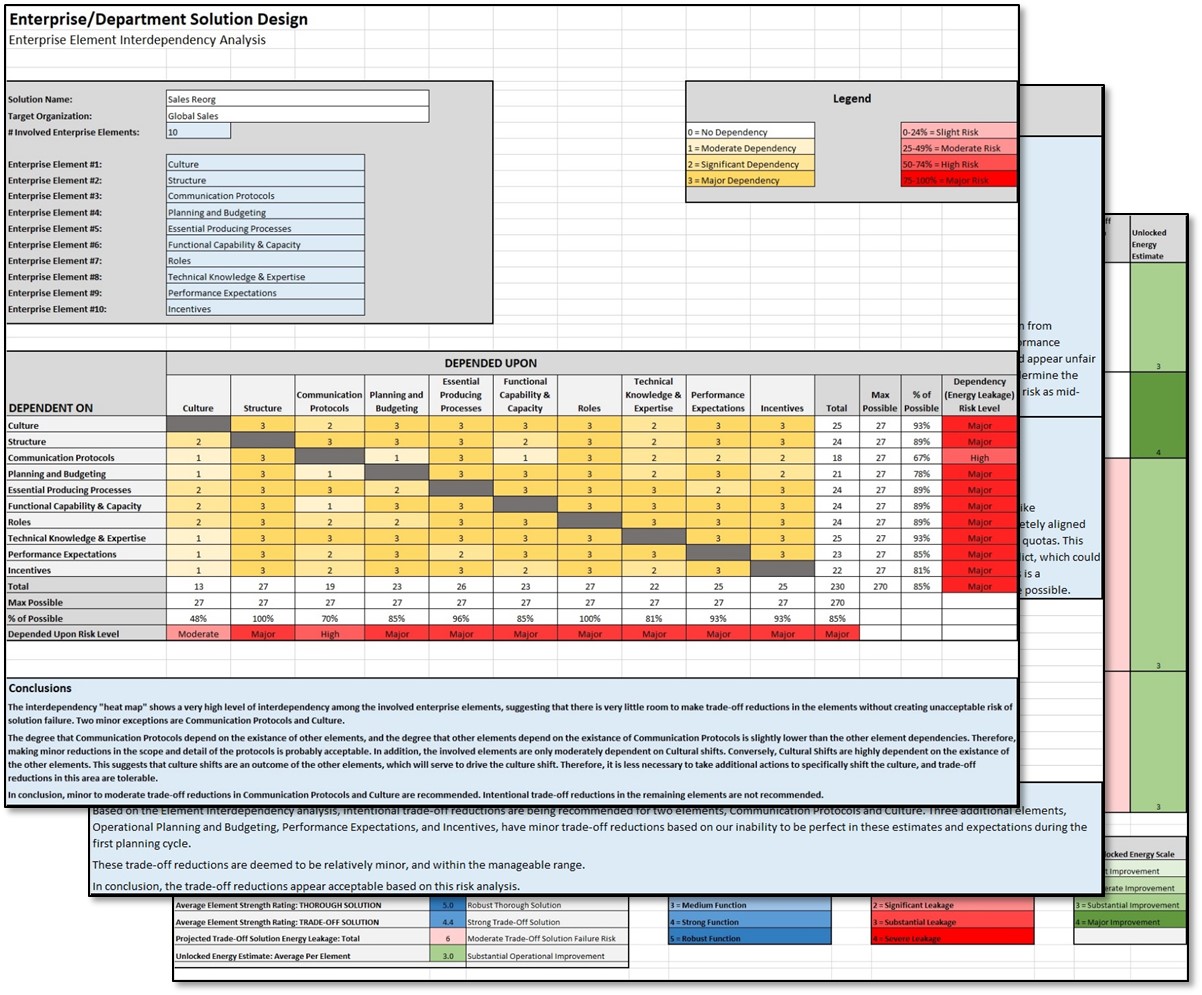Change Management by Design

Why are we revolutionizing change management? To help you. Like most managers, you may be frustrated with the difficulty of driving change in your organization. You may feel as if you’re in an endless battle with your company’s dysfunctional status quo. And this would be nothing new. Thirty years ago the failure rate of change initiatives was about 70%. Today it remains at about 70%, and some estimates put it much higher.
Although it’s more important than ever for companies, government agencies and educational institutions to have an ability to change and transform, they remain stalled and ill-equipped to accomplish the task. Whether it is digital transformation, improving the customer experience, or increasing operational efficiency, the outcome is most likely failure. But why? This article answers that question and outlines a new revolutionary approach to business transformation and change management that could dramatically improve your success rate.
Understanding Success
If we are to understand failure we must first have clarity on what successful change means.
A successful change initiative always comes down to a successful behavioral change. The visual evidence of success is a sufficient shift in the behaviors of the involved people toward the desired behaviors, in accordance with the future vision.
This is true whether the change is a reorganization, process improvement, talent development or digital transformation. For example, there may be system components involved in a particular change, but it is always the behavioral shift (in this case adoption of the system) that determines whether your initiative is at the point of sustainable change. Therefore, behavior change should always be the ultimate goal, and is the measure of success.
Understanding The Primary Cause Of Failure

There is a major deficiency in our traditional change management models and strategies. This deficiency dooms to failure many, if not most, change initiatives – before they even get started. So what have we been missing? The answer: Design.
How we design our organizational solutions can make or break our ability to implement them.
Traditional change management models tend to make the assumption that whatever the change, and however it’s designed, it is fine. In effect, the “new solution” serves only as a starting point for the application of a traditional change management model. These traditional models essentially layer educational and motivational activities on top of what is often a flawed organizational solution.
So why does the design of an organizational solution have so much impact on our ability to successfully implement it? The answer lies in a new approach to change management.
Revolutionizing Change Management
 I first discussed this new approach in my recently released book, The Energy Equation: Unlocking the Hidden Power of Energy in Business. It’s based on the recognition that at the heart of change, and everything else we do in business, is energy. Energy is the currency of business, and in the case of change management, keeping track of energy is how we keep score. Keeping score is based on three primary truths:
I first discussed this new approach in my recently released book, The Energy Equation: Unlocking the Hidden Power of Energy in Business. It’s based on the recognition that at the heart of change, and everything else we do in business, is energy. Energy is the currency of business, and in the case of change management, keeping track of energy is how we keep score. Keeping score is based on three primary truths:
- Behavior change, which is the measure of success, is about a shift in energy in the business environment and among the involved people.
- Change happens successfully when you have enough energy pointed in the right direction for long enough to reach the point of sustainable change.
- Change initiatives fail for only one reason – they run out of energy before they reach the finish line – the point of sustainable change.
Keeping score is about tracking how much energy is available to move the change initiative in the desired direction vs. the amount of “energy leakage” resulting in undesirable behaviors. The undesirable behaviors, (i.e., negative energy), push back on the change – typically back toward the status quo.
Why Design?
The reason the design of an organizational solution has so much impact on our ability to successfully implement it is that the components of the solution and how they’re designed have a huge impact on the energy of the change, both positive and negative. That means that if your departmental change initiative should ideally include a new process and compensation plan, and you don’t include those things in your solution, you will be leaking energy. You will undoubtedly see undesirable behaviors among those involved. Specifically, you will lack the guidance and consistency that a process promotes. You will also lack adequate motivation to change due to an old compensation plan that is now unaligned with the new desired behaviors. Conversely, if these two “enterprise elements” are in place and well designed, they will promote the positive flow of energy in the direction of successful change.
A Whole New Light

Keeping score on change casts change management in a whole new light. Many, if not most, managers in the world today think that leaving some of the involved elements out of the solution, or perhaps giving them a cursory makeover, is perfectly OK.
Managers justify these scope cuts and design shortfalls with statements such as, “We need to keep this simple”, “Our budget is limited”, and my favorite, “Just do training.” In their defense, most leaders simply don’t know any better, and are poorly informed. They think they’re doing the right thing by managing scope, cost and schedule at the expense of the solution. They assume they can make scope cuts without significantly jeopardizing the initiative’s probability of success. Unfortunately, solution scope reductions, and solutions that are poorly designed in the first place, often doom change initiatives to failure. It doesn’t matter how much traditional change management you layer on top of the solution. Crippled solutions drag the change down. As an old boss of mine used to say, “That dog don’t hunt.”
The Two Big Questions
At this point you may be asking yourself, how can I help ensure that “my dog” will hunt? To do that we must be able to answer two big questions for any change initiative. First, what is a thorough solution for this change? Second, what is a sufficient solution for this change? Please allow me to explain.
All companies and agencies are composed of what we call enterprise elements. Any change to the enterprise, or a department within it, involves some portion of those elements. How each of those elements is designed (or perhaps ignored) determines whether it contributes to the change or detracts from it. A thorough solution includes all of the involved elements, and each is designed to be “what it needs to be” as a working contributor to the overall solution. In an ideal world we would always implement thorough solutions, as they have the highest probability of success in implementation. Unfortunately, the world is not always ideal, and managers have to make trade-off decisions regarding the scope of the solutions. But how do we know what is sufficient?
A sufficient solution is a thorough solution with some intelligent and informed reductions in scope. The reductions result in a solution that still has an acceptable probability of implementation success. The amount of energy leakage and undesirable behavior that will result from the scope reductions is likely to be manageable. Implementation success still looks like the probable outcome.
So how do we go about designing a thorough solution and making intelligent scope reductions that give us a level of confidence that we still have a sufficient solution?
A New Methodology and Toolset
 We developed the Enterprise/Department Analysis and Design toolset to implement methodologies described in The Energy Equation. The toolkit is a semi-automatic multi-tab spreadsheet. It steps you through analyzing enterprise and departmental problems, designing a thorough solution, and identifying a sufficient solution. We’ve identified a few chapters in The Energy Equation that will give you the necessary background on energy management to use the toolkit. In addition, the toolkit itself contains detailed guidance and instructions.
We developed the Enterprise/Department Analysis and Design toolset to implement methodologies described in The Energy Equation. The toolkit is a semi-automatic multi-tab spreadsheet. It steps you through analyzing enterprise and departmental problems, designing a thorough solution, and identifying a sufficient solution. We’ve identified a few chapters in The Energy Equation that will give you the necessary background on energy management to use the toolkit. In addition, the toolkit itself contains detailed guidance and instructions.
We are bundling the book and toolkit to help make you a part of revolutionizing change management. All we ask from you is the small price of the book. See our website for details on the Change Management Toolset. If you would like help getting started, please contact us for a complementary consultation.
